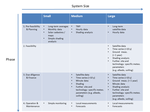6/4/2021
New Solar Bible Published
Planning and using a solar energy system requires reliable information about the solar resource. As a guide through the sometimes complex subject and the various data sources, the 3rd Edition of the "Best Practices Handbook for the Collection and Use of Solar Resource Data for Solar Energy Applications" has now been published.
The update is a collaboration between the IEA's PV Power Systems Program (IEA PVPS) and the US National Renewable Energy Laboratory (NREL). The handbook is aimed at companies in the project development, EPC, power supply, grid operation and financial investment sectors that require high-quality data for the bankability, acceptance and operation of power plants.
Already in the planning phase of large solar projects, you need the best possible information about the quality and reliability of the fuel source, i.e. solar radiation.
Jan Remund, Meteotest, co-editor and co-author of the report and head of IEA PV Power Systems Task 16 "Solar Resource for High Penetration and Large Scale Applications
This includes reliable data on solar resources at specific locations, including historical trends with seasonal, daily, hourly and sub-hourly variability. "In addition, relevant parameters such as temperature, wind speed, reflective radiation or pollution have to be taken into account," says Stefan Wilbert of the German Aerospace Center, co-editor and co-author of the report.
The complexity and scope of the data sets depend on the size of the power plant and the project phase. With the right resource data, it is possible to calculate the expected daily and annual output of a proposed power plant in advance. High quality resource data is required for bankable financial analysis and acceptance of power plants.
 Recommended solar resource data depending on system size and phase.
Recommended solar resource data depending on system size and phase.Readers will find recommendations formulated for practice in the manual on which data should be used in the various work steps. Data and forecasts of solar irradiance and other meteorological parameters are also important for the operation of power plants.
The manual includes the following topics:
- The need for high quality solar data
- Basics of the solar resource
- Methods of solar radiation measurement
- Weather satellite data and numerical weather models
- Additional meteorological variables such as wind speed, albedo, pollution, etc. (new chapter)
- List of commonly used public as well as commercial data sets
- Accuracy of solar data
- Prediction of solar irradiance over time horizons from minutes to hours and days
- Data application for different project phases
- Future research and development work on the solar resource.
The manual is available free of charge on the IEA PVPS Task 16 website:
https://iea-pvps.org/key-topics/best-practices-handbook-for-the-collection-and-use-of-solar-resource-data-for-solar-energy-applications-third-edition/

Your contact
Jan Remund
Head of Energy & Climate
| |